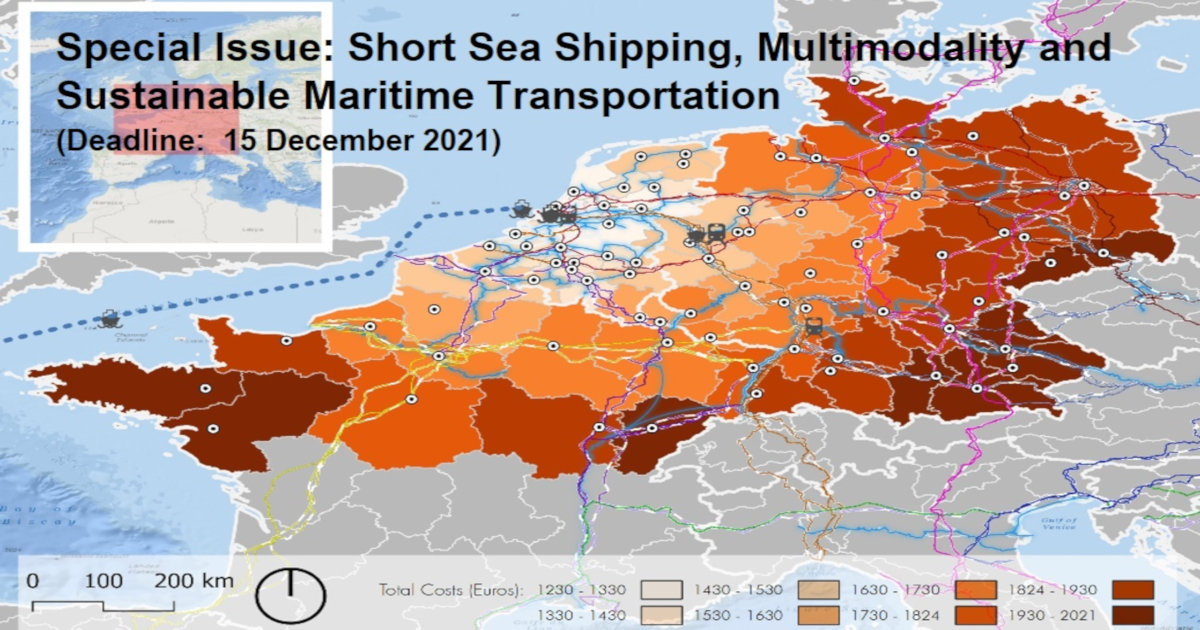Short Sea Shipping, Multimodality, and Sustainable Maritime Transportation
A special issue of Journal of Marine Science and Engineering (ISSN 2077-1312). This special issue belongs to the section "Ocean Engineering".
Deadline for manuscript submissions: closed (15 December 2021) | Viewed by 35205

Image courtesy of Dr. Tiago A. Santos
Special Issue Editor
Special Issue Information
Dear Colleagues,
We are delighted to announce this Special Issue on “Short Sea Shipping, Multimodality, and Sustainable Maritime Transportation”.
Maritime transportation is facing significant challenges due to the combined effects of the recent COVID-19 pandemic, the pressure for an accelerated decarbonization in order to mitigate climate change, the need to promote freight modal shifts away from the road network, and the disruptive effects of the digitalization process. Short sea shipping (a very European concept, but for the scope of this Special Issue, extended to regional shipping) benefits from some of these challenges, mainly those related with the shortening of supply chains made necessary by reliability issues raised by the pandemic and the consequences of digitalization. However, to take advantage of these trends and from the efforts of different governments to foster multimodality, efforts in short sea shipping need to be stepped up to decarbonize and keep pace with other transport modes, upholding short sea shipping’s image as a sustainable mode of transportation. Finally, digitalization is an opportunity to improve the integration of short sea shipping in multimodal transportation, improving transparency and enhancing the shipper’s experience with these complex supply chains.
Authors are encouraged to submit high-quality papers directly related to the various topics mentioned below. Novel methods and techniques applied to these topics will be highly appreciated, as well as papers dealing with short sea shipping in regional contexts outside Europe.
Topics:
- Short sea shipping (SSS)
- Competition between transport modes
- Multimodality
- SSS-based supply chains
- Modal shift studies
- Sustainable shipping
- External costs of transportation
- Safety and reliability in SSS
- Resilience and adaptive capacity
- Dedicated SSS port terminals
- Digitalization in SSS
- Regulatory framework and administrative simplification
Dr. Tiago Santos
Guest Editor
Manuscript Submission Information
Manuscripts should be submitted online at www.mdpi.com by registering and logging in to this website. Once you are registered, click here to go to the submission form. Manuscripts can be submitted until the deadline. All submissions that pass pre-check are peer-reviewed. Accepted papers will be published continuously in the journal (as soon as accepted) and will be listed together on the special issue website. Research articles, review articles as well as short communications are invited. For planned papers, a title and short abstract (about 250 words) can be sent to the Editorial Office for assessment.
Submitted manuscripts should not have been published previously, nor be under consideration for publication elsewhere (except conference proceedings papers). All manuscripts are thoroughly refereed through a single-blind peer-review process. A guide for authors and other relevant information for submission of manuscripts is available on the Instructions for Authors page. Journal of Marine Science and Engineering is an international peer-reviewed open access monthly journal published by MDPI.
Please visit the Instructions for Authors page before submitting a manuscript. The Article Processing Charge (APC) for publication in this open access journal is 2600 CHF (Swiss Francs). Submitted papers should be well formatted and use good English. Authors may use MDPI's English editing service prior to publication or during author revisions.
Keywords
- Short sea shipping
- Multimodality
- Modal shift
- Maritime supply chains
- Sustainability
- Digitalization
Benefits of Publishing in a Special Issue
- Ease of navigation: Grouping papers by topic helps scholars navigate broad scope journals more efficiently.
- Greater discoverability: Special Issues support the reach and impact of scientific research. Articles in Special Issues are more discoverable and cited more frequently.
- Expansion of research network: Special Issues facilitate connections among authors, fostering scientific collaborations.
- External promotion: Articles in Special Issues are often promoted through the journal's social media, increasing their visibility.
- Reprint: MDPI Books provides the opportunity to republish successful Special Issues in book format, both online and in print.
Further information on MDPI's Special Issue policies can be found here.





